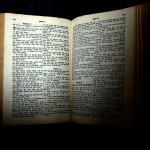In the recent talk by Elder Oaks to BYU-I addressing the topic of the constitutional right to free speech and free exercise of religion, he also noted the establishment clause of the first amendment.
The prohibition against “an establishment of religion” was intended to separate churches and government, to prevent a national church of the kind still found in Europe. In the interest of time I will say no more about the establishment of religion…
The difficulty with this omission was evidenced in the reaction to his speech. Many of the debates about the place of religion in public life tend to focus on either free exercise or the establishment clause, to the detriment of the other. Religionists, as in the case of Elder Oaks, tend to emphasize free exercise, while secularists tend to emphasize disestablishment. Each views the other as a threat, and Oaks’ overlooking of the limitations of the establishment clause in relationship to free exercise plays into the fears that those who emphasize the role of religion in public do so at the expense of the establishment clause.
The interesting thing about free exercise of religion and disestablishment is the way that they’ve been taken up recently by advocates of sexual reform. In Love the Sin, Janet Jacobsen and Ann Pelegrini make the argument that sexual freedom is best based on both the free exercise of religion and disestablishement clauses, rather than appeals to fundamental rights and calls for “tolerance.” In making this comparison by analogy, the authors argue that sexual freedom, like religious freedom, is a freedom based on practices, not necessarily immutable identity. At the same time, and for similar reasons as the disestablishment of religion, the authors call for the disestablishment of (hetero)sexuality. The connection between public religion and public sexuality is intense, as those who generally argue for the importance of religion in the public square have in mind matters related to sexuality, not matters of, say, economic justice like the Catholic workers movement, or the Catholic Bishop’s 1999 statement on debt forgiveness when it comes to foreign policy.
The immediate value of this comparison is clear. Just as one is free to practice their religion, so one is also free to practice their sexuality; and just as one the government does not promote one religion over another (in theory, at least), nor should it promote one sexuality over another. One might also apply a similar test for restrictions on sexual freedom as those in case of religious freedom, namely, a compelling state interest. For instance, there is a compelling state interest against sexual violence or abuse, just as religious violence. While some may argue that banning gay marriage does constitute a compelling state interest, this argument would require substantiation. Just as one might say that the public service of Jehovah’s Witnesses constitutes a state interest, it does not qualify as a compelling state interest that would overrule the free exercise of religion. Gay marriage might similarly be protected, the authors argue. The authors argue for simultaneously an increase in the free exercise of religion, which they see as only possible through a more thorough disestablishment, and by analogy an increase in the free exercise of sexuality, which is also made possible through disestablishment.
In reading this argument, I was intrigued by its possible implications, and would like to further explore the strengths and weaknesses of the argument and the analogy. In what way might Elder Oaks’ emphasis on religious freedom serve as a model for the sexual freedom he opposes? Does the robust notion of religious freedom that Oaks puts forward actually work against his claims by giving greater ground to a notion of sexual freedom? Does the overlooking of the establishment clause fail to make the case for why the government should make policy decisions based on religion, or why the government should establish one form of sexuality or another? Is thinking about Prop 8 in terms of the free exercise of religion a mixup, when establishment of religion (and sexuality) is the real issue at stake?











